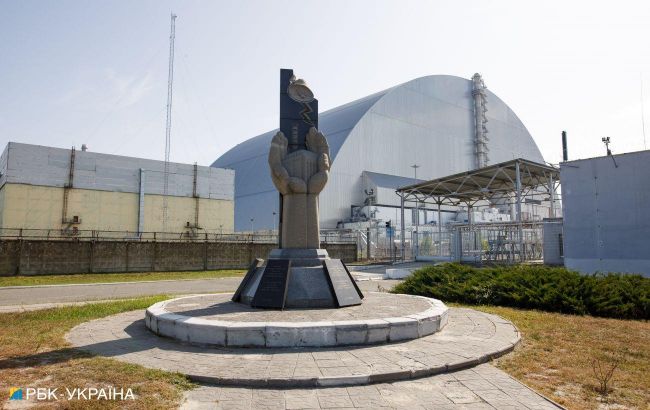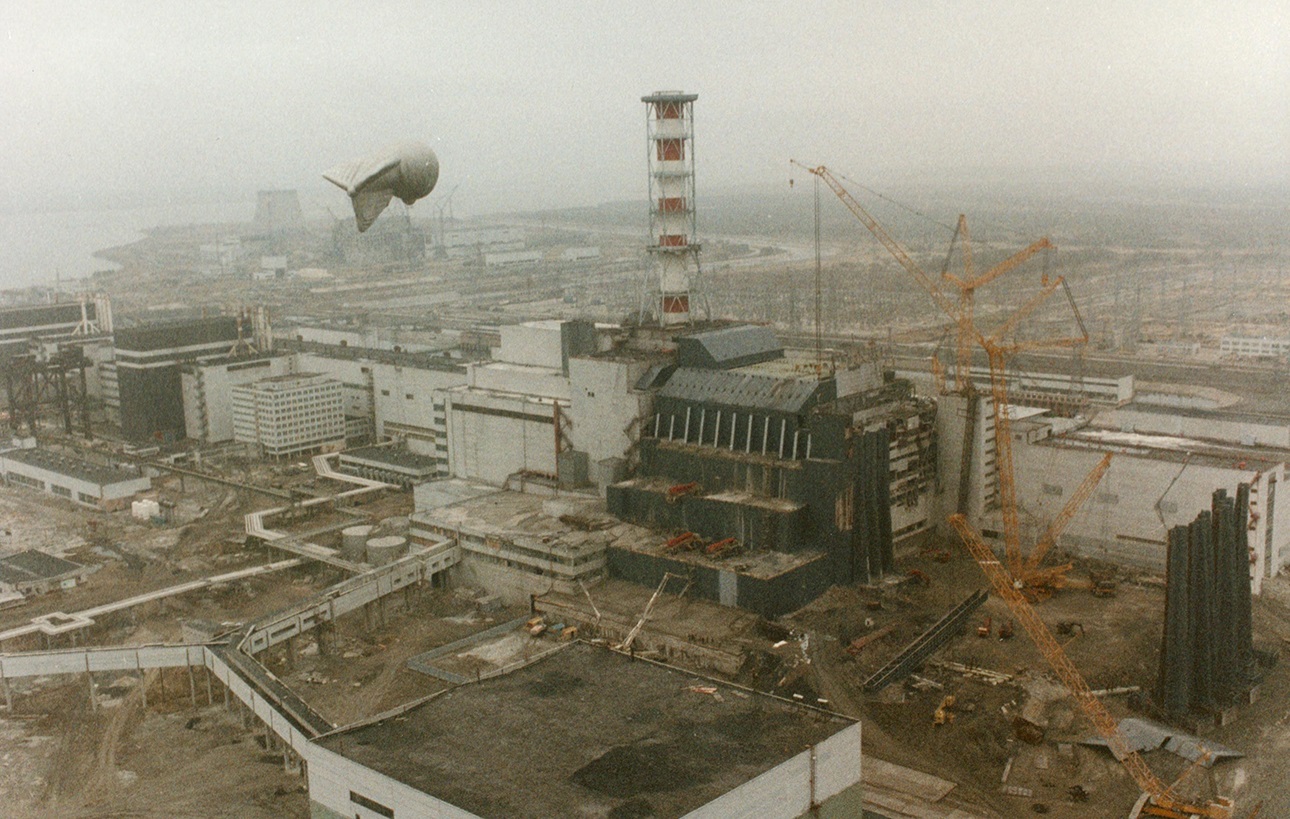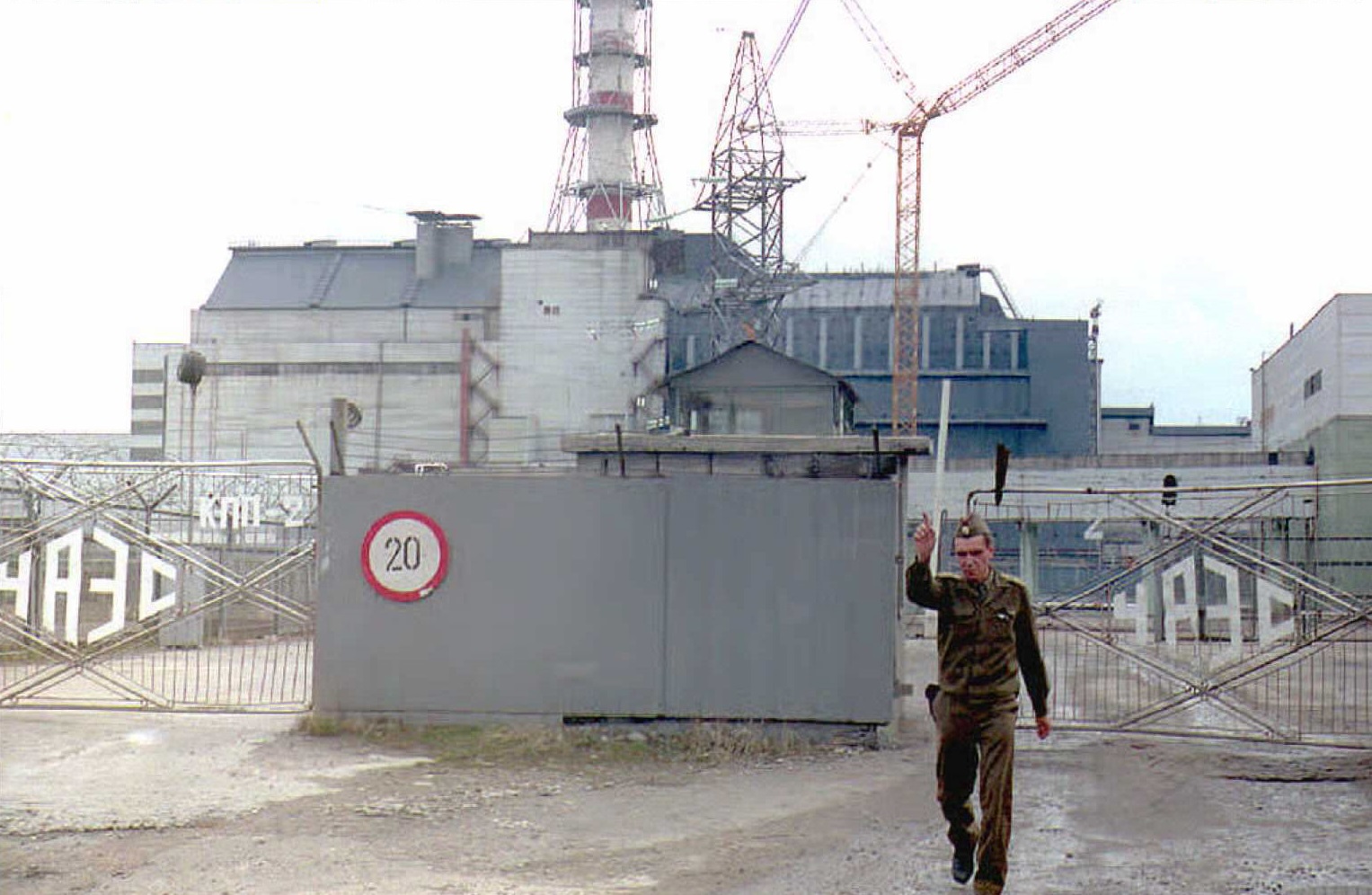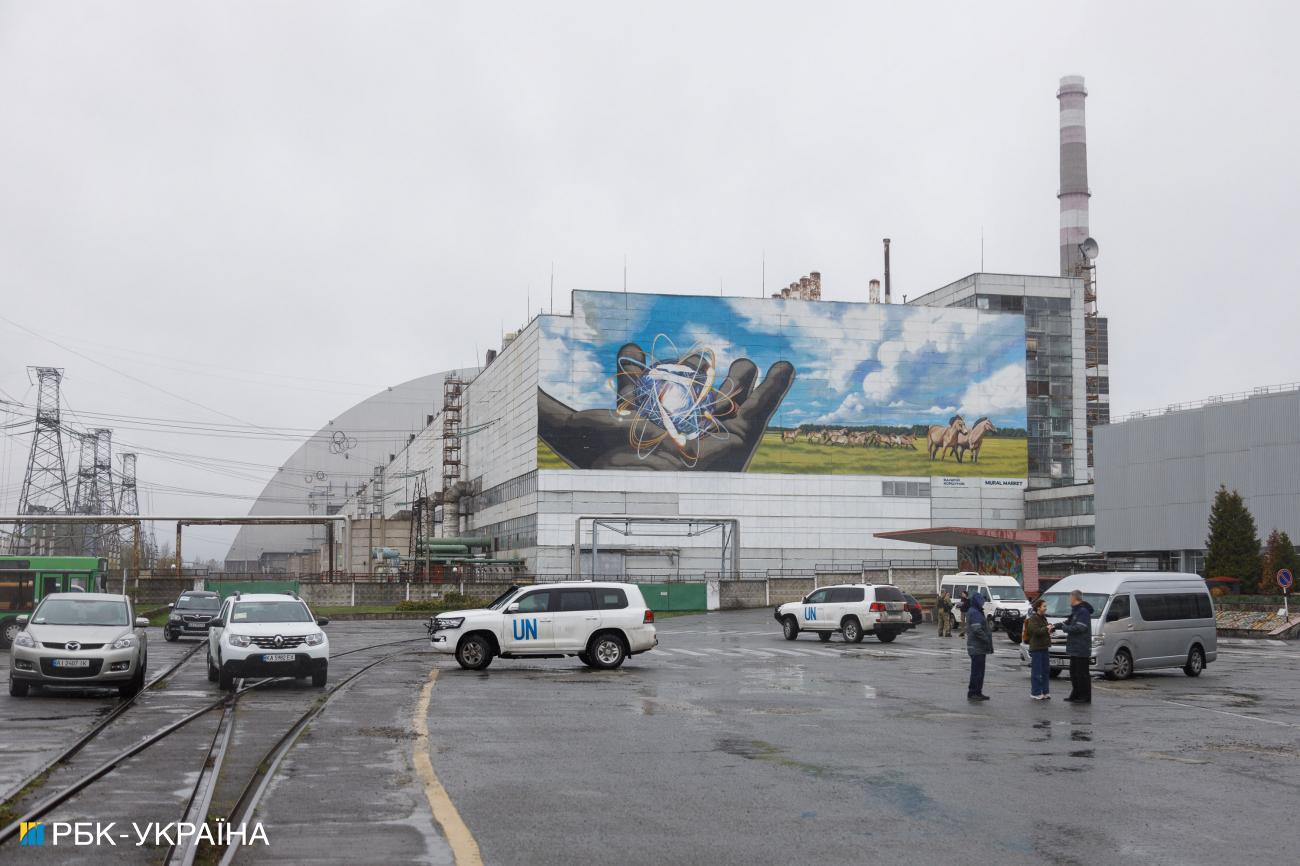Chornobyl and Russian nuclear terror: Why tragedy at nuclear power plant could happen again
 Photo: Chornobyl NPP (Vitalii Nosach, RBC-Ukraine)
Photo: Chornobyl NPP (Vitalii Nosach, RBC-Ukraine)
The Chornobyl accident 38 years ago was recognized as the largest man-made disaster in history. Years later, Ukraine's nuclear power plant is once again in danger. More than a month under Russian occupation, the threat of radiation leakage, and a 600-hour staff shift - all that was experienced by Chornobyl at the beginning of a full-scale Russia's invasion of Ukraine.
Read more about the Chornobyl tragedy, how the Soviet authorities tried to hide information about it, and what happened at the plant after Russia's invasion in the RBC-Ukraine article.
Sources used: information from the Chornobyl NPP website, Ukrainian Institute of National Memory, Energy Minister Herman Halushchenko, Security Service of Ukraine spokesperson Artem Dekhtiarenko, and Wikipedia.
Contents
- Highest level of danger. Chornobyl accident and its consequences
- How USSR tried to hide scale of disaster
- Seizure of Chornobyl nuclear power plant. Threat of nuclear fuel leakage, personnel in captivity
- Chornobyl after de-occupation
Highest level of danger. Chornobyl accident and its consequences
On the night of April 26, 1986, an explosion occurred during a nuclear reactor test at Chornobyl NPP Unit 4. A large-scale fire broke out, and the reactor with nuclear fuel was destroyed.
As a result of the accident, a cloud of radioactive substances was released into the air, covering large areas of Ukraine, and Belarus, as well as parts of Russia and European countries.
The release of radioactive substances into the environment was up to 380 million curies. The accident was assigned the maximum 7th level of hazard according to the International Nuclear Event Scale (INES). For comparison, during the 2011 Fukushima accident (also level 7 on the INES scale), the radiation release was only 20% of the amount of radiation released at the Chornobyl NPP.
About 5 million hectares of land became unsuitable for agricultural work after the accident. A 30-kilometer exclusion zone was created around the Chornobyl nuclear power plant, hundreds of small settlements were destroyed and buried, and about 200,000 people were evacuated from the contaminated areas. Prypiat, where the families of the plant's employees lived, became a ghost town.
Work to eliminate the Chornobyl accident lasted until 1987, involving about 240 thousand people.
In 1986, a protective sarcophagus was erected over the building of ChNPP Unit 4, and in 2015, a new arch of Shelter 2 was commissioned. According to the nuclear power plant decommissioning program, Chornobyl should become an environmentally safe facility by 2065.
 Photo: Nuclear power plant after the explosion (Getty Images)
Photo: Nuclear power plant after the explosion (Getty Images)
The exact number of victims of the Chornobyl tragedy has not been established. Rescuers who worked at the plant in the first days after the accident received incompatible doses of radiation. Thirty-one people died of acute radiation sickness. Over the next 15 years, the consequences of radioactive exposure caused the deaths of 60 to 80 people.
According to medical research, after the Chornobyl accident, there was a jump in the detection of cancer among the population of Europe. The WHO published data on the possible death of 4 thousand people as a result of the tragedy.
How USSR tried to hide scale of disaster
In the first days after the Chornobyl accident, Ukrainians did not suspect its seriousness. Neither the authorities nor the media talked about the disaster. According to the Ukrainian Institute of National Remembrance (UINR), the USSR leadership and special services classified all information about the danger of radioactive contamination as “secret.”
On April 27, the evacuation of people from Prypiat and nearby villages began, but the news continued to be silent about what had happened. Only in the evening edition of the Vremya TV program did the host report without details that an accident had occurred at the Chornobyl nuclear power plant, as a result of which one of the reactors was damaged, the victims were being provided with assistance and a government commission had been set up.
Even the latest issue of the local Chornobyl newspaper published a “reassuring” message instead of information about the accident: “Soviet people can live in peace: the party is deeply aware of its responsibility for the future of the state.”
Meanwhile, the May Day holidays were approaching, with crowded demonstrations. Although a cloud of radioactive dust was moving toward Kyiv, the authorities did not cancel the parade. On May 1, thousands of people took to the streets of the capital.
Soviet leader Mikhail Gorbachev spoke in detail about Chornobyl only on May 14, 1986, in his address to the public.
The scale of the disaster was also concealed outside the Soviet Union, even though an increase in radiation levels after the accident was immediately recorded in Sweden, and the wind carried emissions to Finland and beyond.
One of the first reports from the KGB Office in Kyiv and the region on April 26 stated: “To prevent information leakage, spreading false and panic rumors, control of outgoing correspondence has been organized, and subscribers' access to international communication lines has been restricted.”
The G7 leaders called for information about the accident, but the Soviet leadership claimed that “everything was not so bad,” the radiation situation had allegedly been stabilized and there was no danger to human life.
The KGB controlled the movement of foreign delegations and tapped the phone calls of foreigners who came to Kyiv in search of truthful information.
 Photo: the consequences of the accident were tried to be hidden (Getty Images)
Photo: the consequences of the accident were tried to be hidden (Getty Images)
The true diagnoses of the victims of radiation exposure were also concealed.
“According to the Shevchenkivsky District Department of the KGB, the administration of the Kyiv region and 25 hospitals, based on the instructions of the Ministry of Health of the Ukrainian SSR, diagnosed patients with signs of radiation sickness with vegetative-vascular dystonia." This was stated in the certificate of the 6th Department of the Kyiv KGB, the content of which is cited by the UINP.
Seizure of Chornobyl nuclear power plant. Threat of nuclear fuel leakage, personnel in captivity
The Chornobyl nuclear power plant was again threatened on February 24, 2022. Russian troops occupied the nuclear power plant, infiltrating it from the territory of Belarus.
The Russians had heavy military equipment that could cause significant damage to the plant's facilities and pose a risk of a radiation accident in the event of hostilities. Therefore, the Ukrainian National Guard soldiers who were at the NPP at that time decided to lay down their arms and surrender.
The plant's staff, who came on shift on February 23, were also taken hostage. People were forced to stay at their workplaces 50 times longer than they were supposed to. Instead of a 12-hour shift, they worked more than 600 hours.
Only after 3 weeks of occupation, the staff was partially evacuated. Instead, 46 volunteers from among other employees arrived to keep the plant running.
 Photo: Chornobyl NPP after de-occupation (Vitalii Nosach, RBC-Ukraine)
Photo: Chornobyl NPP after de-occupation (Vitalii Nosach, RBC-Ukraine)
Due to Russian shelling on March 9, 2022, the plant was completely de-energized. Although ChNPP is decommissioned, the facility remains a huge complex with three spent fuel storage facilities and several radioactive waste sites.
A blackout at the plant could have led to a loss of control over safety systems and the failure of the pumps in the cooling pool of the nuclear fuel storage facility, which threatened to leak radiation and further spread it to Ukraine, Russia, Belarus, and Europe.
The power required to store hazardous spent nuclear fuel was supplied only through diesel generators. The external power supply to the plant was restored only on March 14.
Ukraine called the Russian actions at the Chornobyl NPP an act of nuclear terrorism.
The Security Service of Ukraine collected evidence that the Russian military violated nuclear safety standards. In particular, they damaged buildings and mined the territory, making conducting regular external radiation monitoring and continuous supply of spare parts, fuel, and consumables impossible. The Russian troops also kept the staff under stressful conditions, increasing the likelihood of professional errors.
“By turning Chornobyl NPP into its temporary military base, Russia has grossly violated the Geneva Convention, which explicitly prohibits attacks on nuclear facilities in an armed conflict,” says Artem Dekhtiarenko, Security Service of Ukraine spokesperson.
Chornobyl after de-occupation
Under pressure from the Armed Forces of Ukraine, Russian troops left Chornobyl on March 31, 2022, and on April 2, the Ukrainian flag was raised over the station again.
The Russians took hundreds of cars and computers with them. They looted a modern laboratory in the exclusion zone, a police station, a hotel, and offices in Chornobyl. The Russians also stole 1,500 radiation dosimeters and almost all fire extinguishing equipment at Chornobyl. The damage amounted to $135 million.
However, the Russian invaders also took a piece of Chornobyl with them in the form of a radiation dose, as they dug trenches in the Red Forest, one of the most contaminated places in the zone, and moved around in heavy machinery, raising radioactive dust into the air.
“Not only all the occupiers‘ personnel and ’trophies' are contaminated, but also all the military equipment that passed through Chornobyl - about 10 thousand units. Every Russian soldier will bring a piece of Chornobyl home. Alive or dead,” says Ukrainian Energy Minister Herman Halushchenko.
In April 2022, direct communication between Chornobyl NPP and the International Atomic Energy Agency (IAEA) was restored. Arriving at the plant a few weeks after the de-occupation, the Agency's representatives recorded a “slight increase” in radiation levels but declared no danger to personnel.
Since 2023, a permanent IAEA mission has been operating at the station.
Like the rest of Ukraine, the Chornobyl nuclear power plant is still under the threat of Russian shelling.
 Photo: Ukrainian Armed Forces training in the Chornobyl zone (Getty Images)
Photo: Ukrainian Armed Forces training in the Chornobyl zone (Getty Images)
To secure the Chornobyl zone, video surveillance equipment was installed to monitor any movement at a considerable distance around the clock, and special sound sensors and cameras were introduced to detect objects such as drones or missiles and alert air defense forces.
The Ukrainian National Guard guards the station. Of the 169 National Guard members taken prisoner during the Russian occupation of Chornobyl, 66 have been returned home as of March 2024. 103 Ukrainian soldiers are still in the Russian captivity.
Reuters investigation reported that Russia was able to quickly seize the Chornobyl nuclear power plant thanks to secret agents who had been working in Ukraine long before the full-scale Russian invasion.

